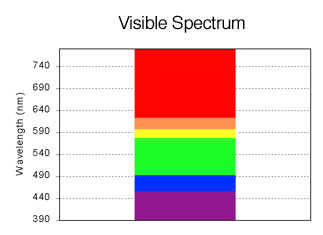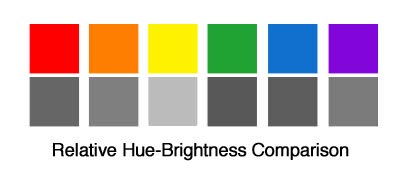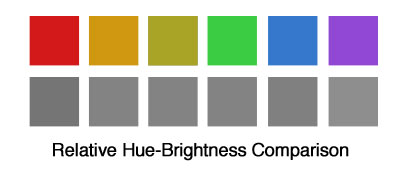Hue
Hue refers to a specific wavelength of color and is typically described as the name of the color. For example, blue, red, green, and yellow each name a specific color. The general guide for what constitutes a color name is the visible spectrum. Red, orange, yellow, green, blue, violet, red. All other name variations (pink, brown, cyan, etc.) can be defined as one of the spectrum colors when brightness and saturation are taken into consideration. In normal human vision, the wavelengths of visible hues fall between about 400 nm and 700 nm in the spectrum with the longer wavelengths equating to the red end of the spectrum.


The image below illustrates a change in hue. The top row depicts a range of hues (red, orange, yellow, green, blue, and violet). The second row depicts gray reference squares indicating the brightness of the matching hue. Note that some colors are inherently high brightness (yellow) and others are inherently lower brightness (green and blue).

The image below illustrates another change in hue. Note that while the hue changes, the brightness as indicated by the gray reference squares, does not. To achieve similar brightness, the saturation must be altered. This is particularly noticeable in the yellow square below that appears as a less “pure” yellow when compared to the Hue illustration above.
